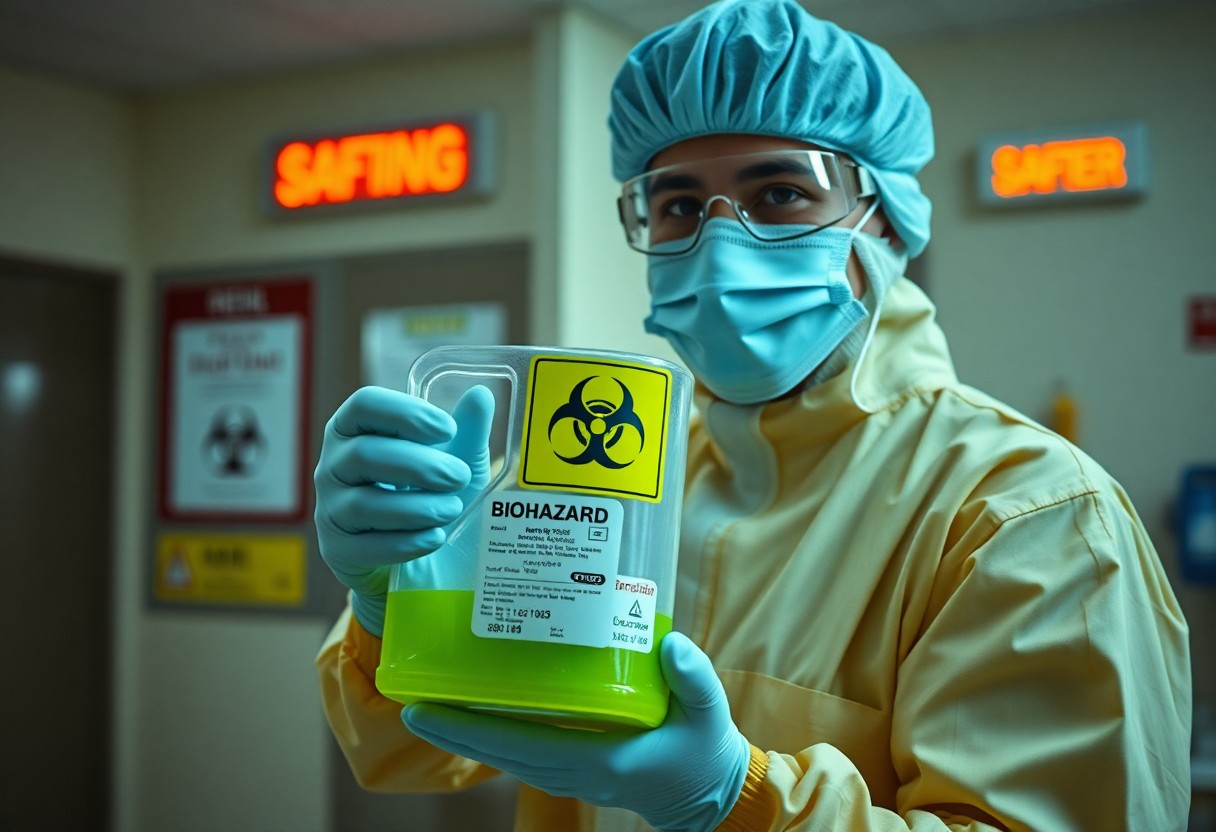Fluids can carry bloodborne pathogens, which are infectious microorganisms present in human blood and other bodily fluids. As you go about your daily tasks, whether in a healthcare setting, laboratory, or any environment where you may encounter these substances, it’s necessary to handle them with care to protect yourself and others around you. This article provides you with important guidelines on safely managing bodily fluids and reducing the risk of infection.
First and foremost, it’s vital to identify which bodily fluids you might encounter. These include blood, saliva, urine, feces, and other fluids that may be contaminated. If you are in a healthcare profession, any instance involving an open wound, exposure to mucous membranes, or non-intact skin can put you at risk. Understanding these potential exposures will help you stay vigilant and prepared.
Using personal protective equipment (PPE) is an necessary step in ensuring your safety. Always wear disposable gloves when handling any materials that may come in contact with bodily fluids. In situations where splashes are possible, consider using face shields or goggles to protect your eyes and face. You should also wear appropriate clothing such as gowns or lab coats to shield your skin from exposure. The right PPE acts as a barrier between you and potential pathogens.
Once you have adequately protected yourself, your next step is to practice safe handling techniques. Always treat all bodily fluids as though they are infectious. Be cautious and avoid any actions that could result in exposure, such as biting your nails, wiping your face, or adjusting your PPE with ungloved hands. If any fluid comes into contact with your skin or mucous membranes, wash the area immediately with soap and water and report the exposure to your supervisor.
Proper disposal of contaminated materials is another key aspect of safety. Use designated biohazard containers for disposing of any used gloves, gauze, or other items that may contain bodily fluids. These containers are usually marked with a universal biohazard symbol, making it easy for you to identify them. It is necessary to follow your organization’s environmental health and safety policies regarding waste management to minimize environmental hazards.
Infectious diseases like HIV, Hepatitis B, and Hepatitis C are transmitted through bloodborne pathogens. Being aware of how these diseases spread and understanding the implications of exposure can guide your actions and instill a heightened sense of responsibility. Participating in training sessions and staying updated on workplace policies will bolster your knowledge and preparedness.
Lastly, it’s necessary to promote a culture of safety among your colleagues. Encourage open discussions about experiences with bodily fluids and any safety concerns. This collaborative attitude fosters a workplace environment where everyone is attentive and committed to minimizing risks associated with bloodborne pathogens. By sharing knowledge and experiences, you aid in creating safer conditions for all.
To wrap things up, safe handling of bodily fluids involves being aware, using protective equipment, applying safe techniques, disposing of materials correctly, and promoting safety in your environment. By following these guidelines, you can significantly reduce the risk of exposure to bloodborne pathogens.
Fluids such as blood, saliva, and other bodily substances can pose serious health risks if not handled properly. Understanding how to manage these materials is crucial to your safety and the safety of those around you. Whether you’re working in a healthcare setting, a laboratory, or any environment where exposure to bloodborne pathogens is possible, you need to be aware of the necessary safety protocols.
First, it’s important to know that bloodborne pathogens are infectious microorganisms present in human blood that can cause disease. Common examples include the viruses that cause HIV, Hepatitis B, and Hepatitis C. Exposure to these pathogens can occur through cuts, abrasions, or mucus membranes when handling contaminated materials.
To ensure your safety, always use personal protective equipment (PPE) such as gloves, masks, and aprons when dealing with any bodily fluids. This equipment serves as a barrier between you and potentially infectious materials. Make it a habit to check your PPE for any damage before use. If you find any tears or holes, replace them immediately.
When you anticipate coming into contact with bodily fluids, such as during medical procedures or clean-up scenarios, be proactive. Ensure that you have the necessary supplies and PPE on hand before starting any task. If you are disposing of potentially contaminated objects, use suitable disposal methods such as biohazard bags for proper containment. This will greatly reduce the risk of accidental exposure.
You should also be well-acquainted with your organization’s exposure control plan. This plan outlines procedures for handling, cleaning, and disposing of materials that may contain bloodborne pathogens. Following these procedures diligently can substantially decrease the likelihood of accidental exposure.
In the event you do encounter a situation involving bodily fluids, approach it systematically. First, if possible, alert others nearby to keep a safe distance. Then, use appropriate methods to clean up the spilled fluid. Utilize absorbent materials designed specifically for biohazard clean-up, and disinfect the area thoroughly once the fluid is removed.
If you get a cut or puncture from any contaminated object, or if you experience exposure through another route, notify your supervisor immediately and seek medical attention. It may be necessary to document the incident as part of your organization’s safety protocols.
You play an crucial role in minimizing the risk associated with bloodborne pathogens. By staying informed, using proper PPE, and following the prescribed safety guidelines, you contribute to a safer workplace for yourself and your colleagues. Knowledge and preparation are your best tools for handling bodily fluids safely, thus mitigating potential health risks associated with bloodborne pathogens.

Leave a Reply